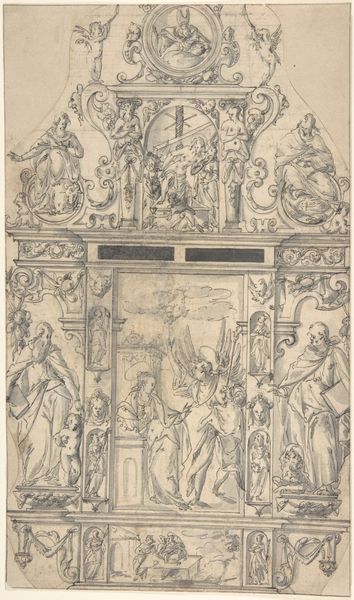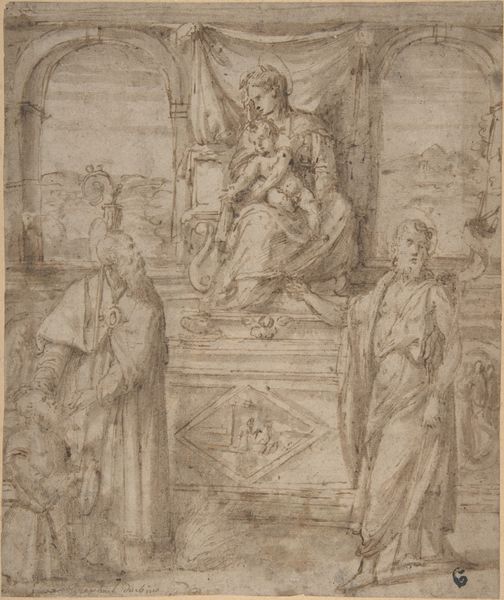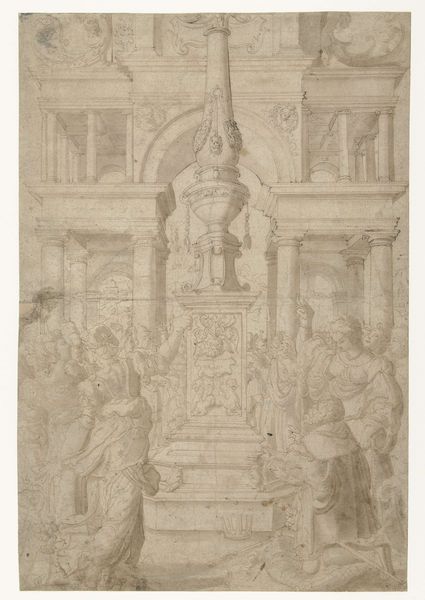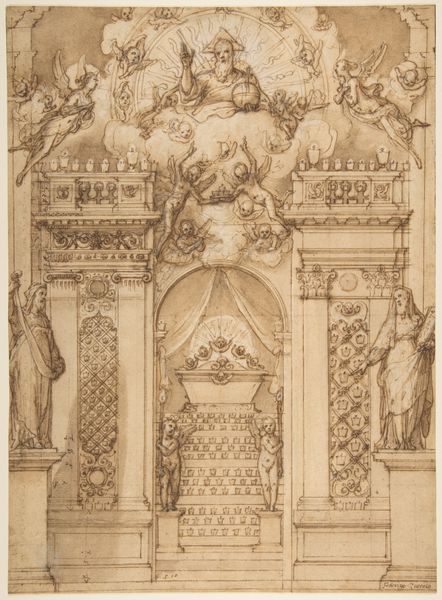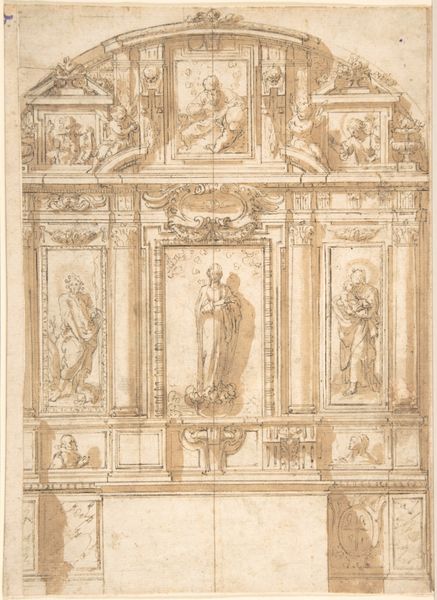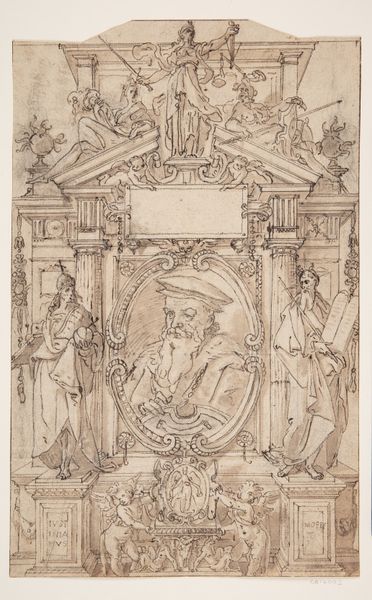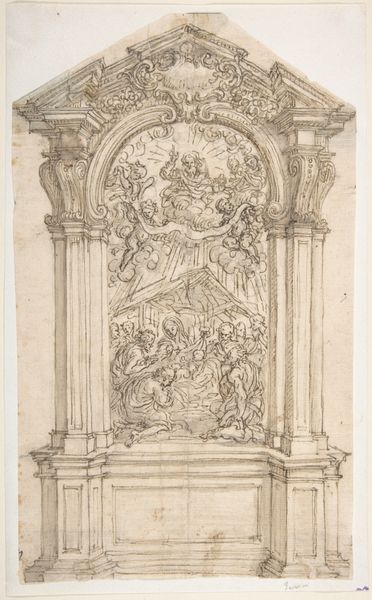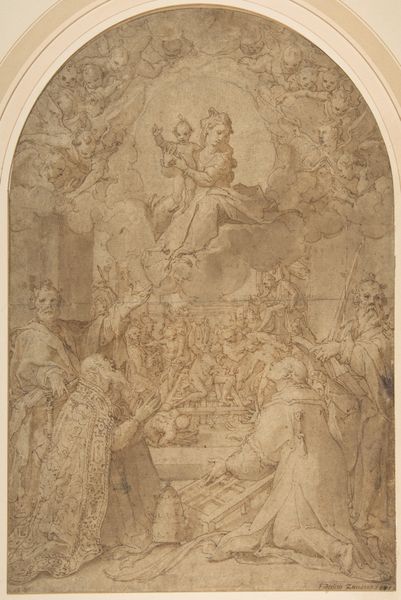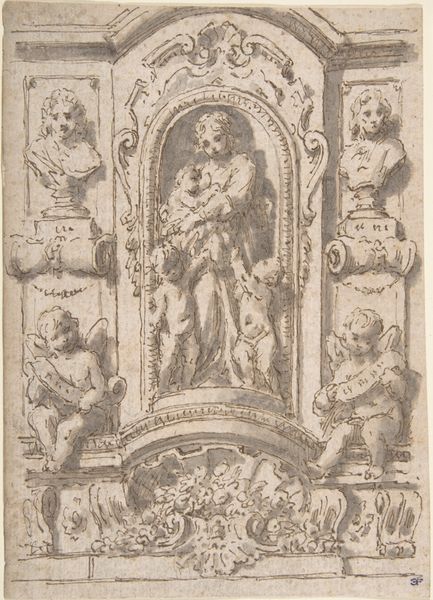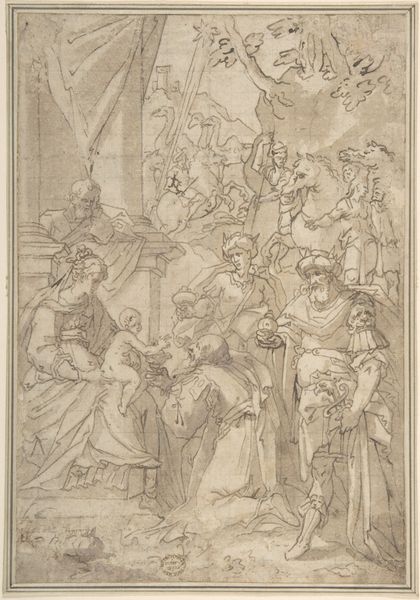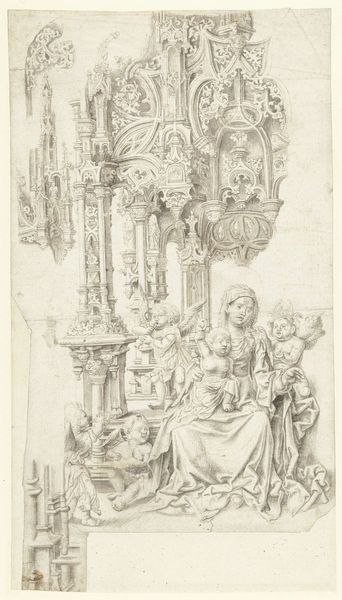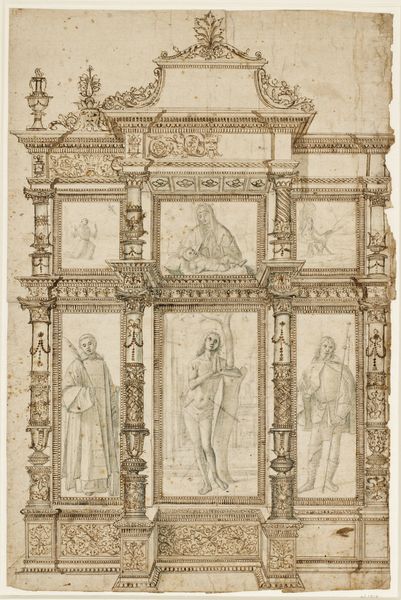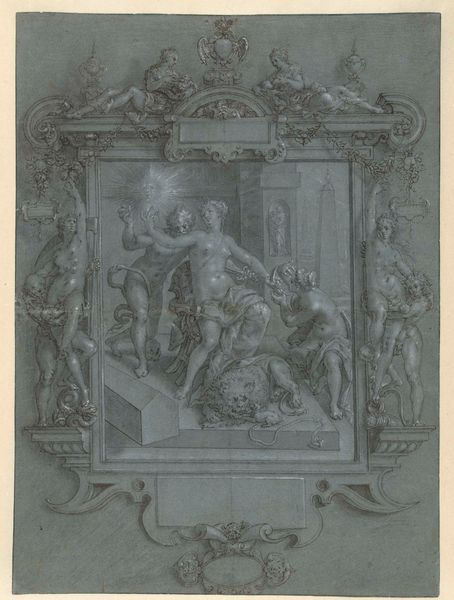
drawing, pencil
#
drawing
#
allegory
#
pencil sketch
#
figuration
#
11_renaissance
#
pencil
#
history-painting
#
northern-renaissance
#
pencil art
Dimensions: height 275 mm, width 161 mm
Copyright: Rijks Museum: Open Domain
Curator: This intricate pencil drawing is "Ontwerp voor een grafmonument voor Margaretha van Oostenrijk," or "Design for a Tomb Monument for Margaret of Austria," created between 1543 and 1556 by Lancelot Blondeel. Editor: My first impression is one of sombre grandeur. The composition is dominated by strong verticals and horizontals, creating a sense of architectural stability that belies the mournful scene depicted. Curator: Absolutely. Note the Renaissance architectural framework—the columns, arches, and elaborate ornamentation. Blondeel is meticulously laying out not only representational figures but an entire symbolic structure. What draws your eye? Editor: Well, for me it's impossible to ignore the power dynamics at play. Margaret of Austria is depicted kneeling before a female figure holding a staff or scepter, a likely personification of piety or power, depending on the interpretation. Margaret’s pose—one of submission or supplication—within the very design of her final resting place, speaks volumes about the performance of piety expected of female rulers at this time. Curator: Interesting. Semiotically, the arrangement presents a clear hierarchy reinforced by gesture and positioning. Notice too the almost diagrammatic representation of drapery; the artist gives precedence to the linear unfolding of these shapes as opposed to representational realism. Do you read any symbolic charge into those choices? Editor: I think the treatment of the figures is purposeful, it’s calling our attention to something beyond the purely representational. This could signal how rulers navigated personal desires within restrictive political and social contexts. But beyond all this, is this positioning simply another calculated manoeuvre intended to solidify her place in history? Curator: Possibly. The artist has crafted a monument, and it's difficult to know whose intention is guiding these details. I wonder how the public perceived this work. How can they connect it to what they believe, given the social norms imposed onto people, when faced with artworks, and specifically those created in the Renaissance? Editor: Food for thought. The act of commissioning art, especially memorial art, involved intricate negotiations of identity, authority, and legacy—Margaret’s story continues to resonate in that vein. Curator: Indeed. Through form and placement, Blondeel’s drawing is as much a visual essay on power and authority, as a plan for an artwork. Editor: And, for me, that duality of purpose transforms the work from a mere tomb design into an incisive historical commentary.
Comments
No comments
Be the first to comment and join the conversation on the ultimate creative platform.
